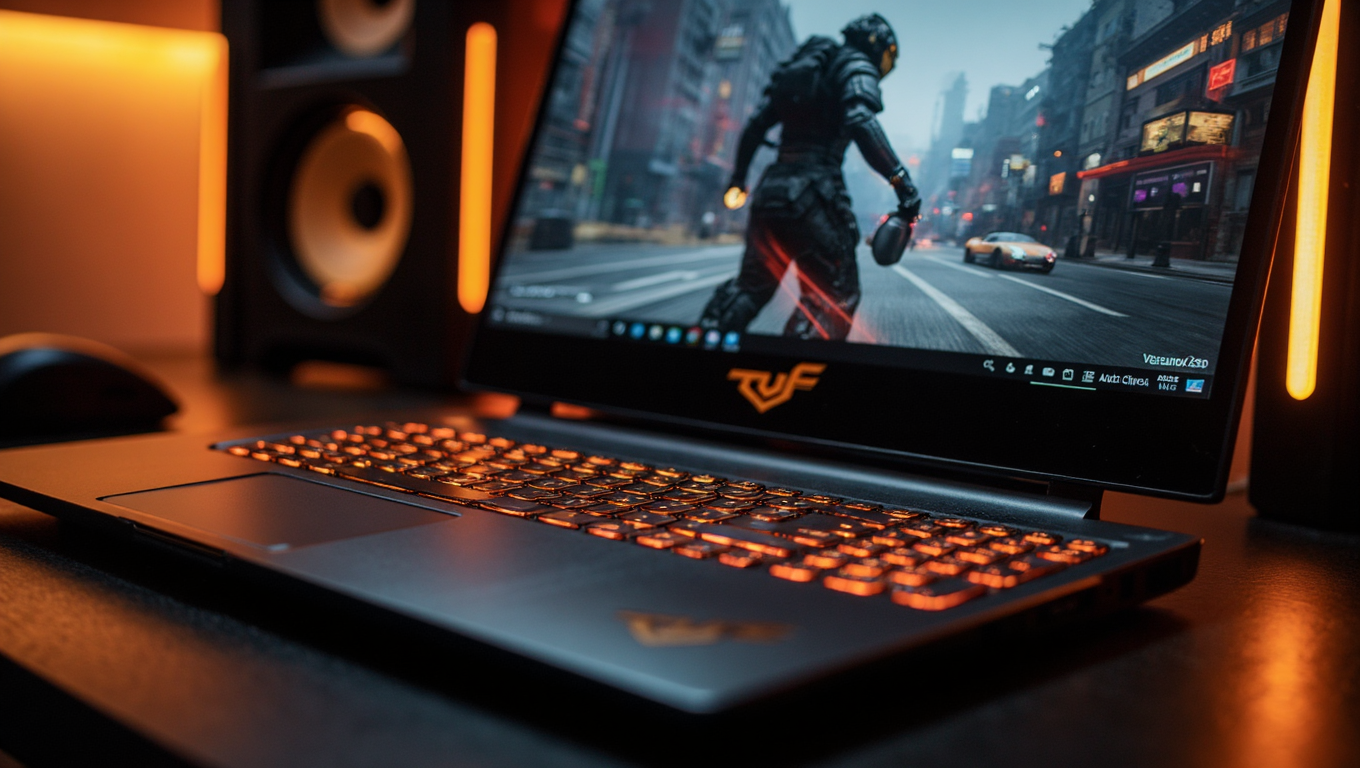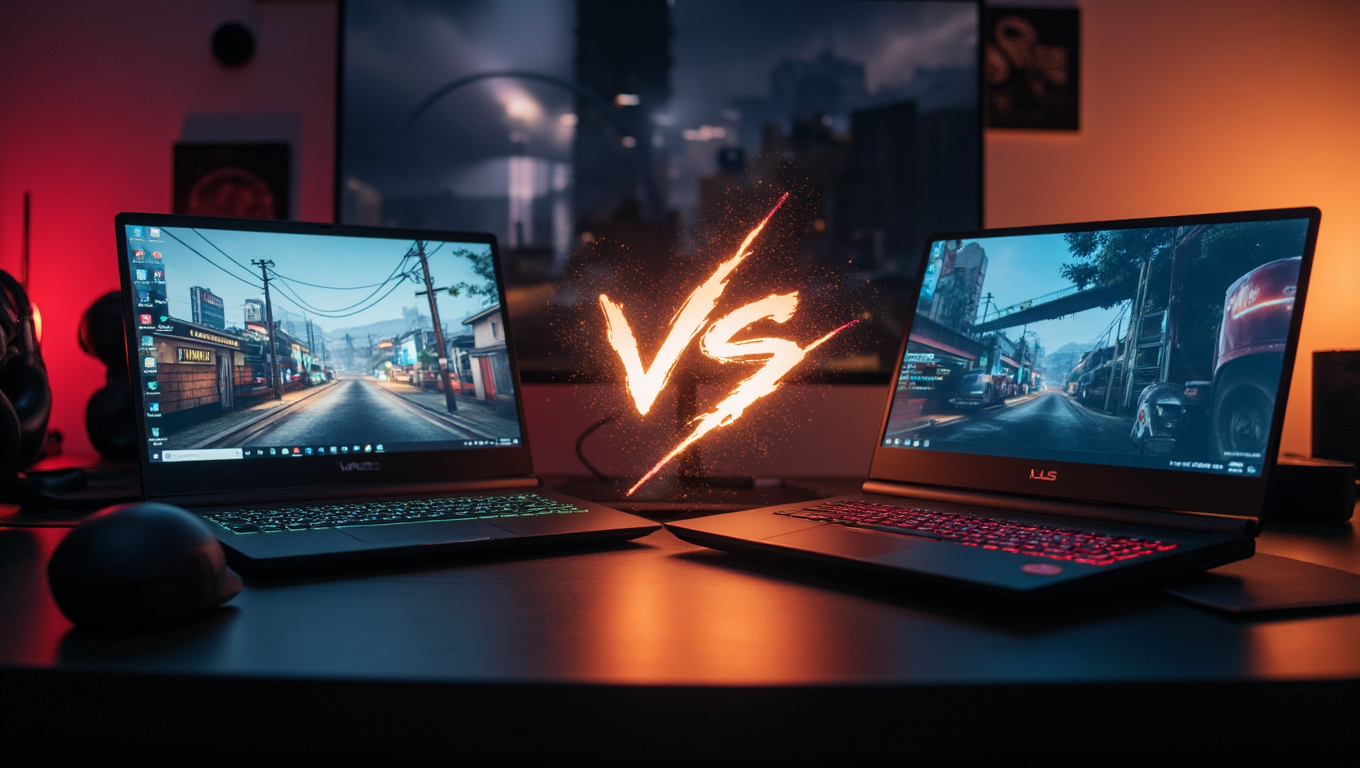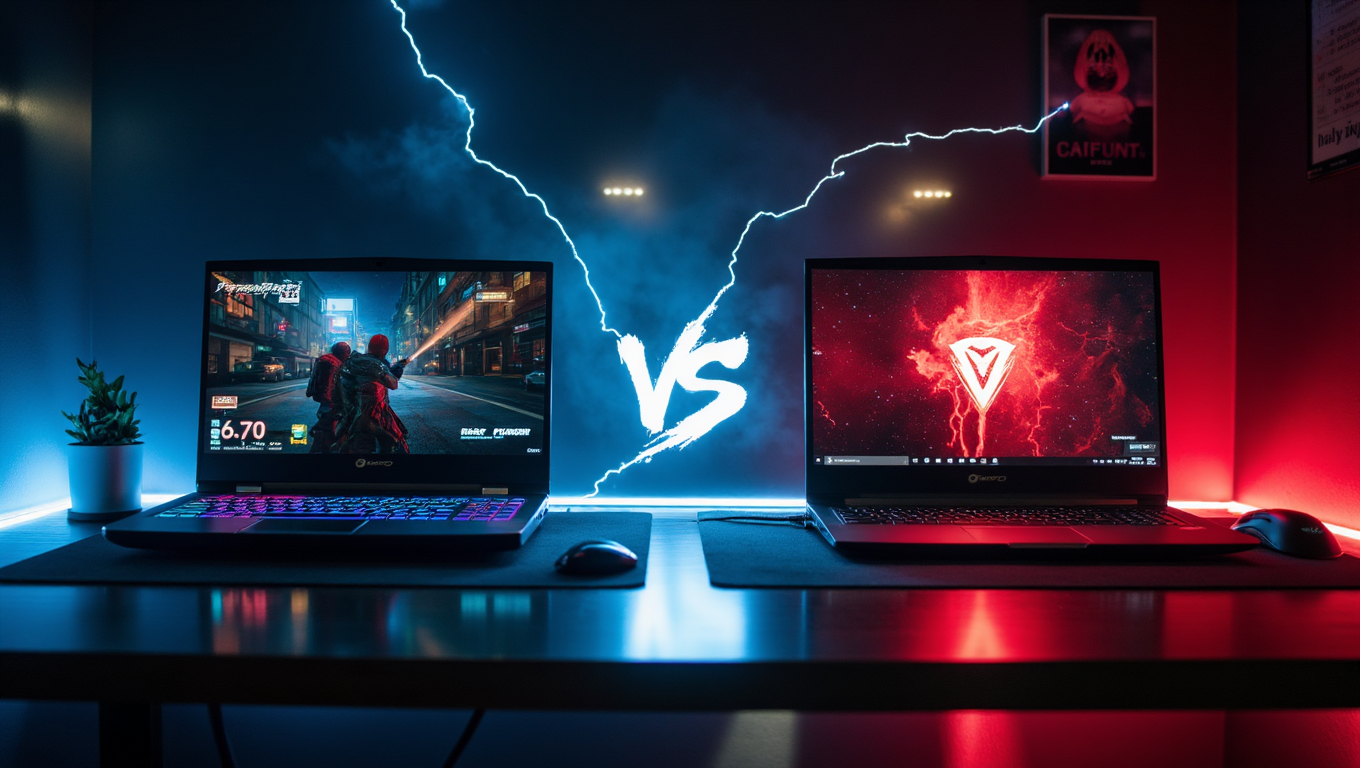If you’re scouting for a gaming laptop that doesn’t demand your entire paycheck but still delivers on the battlefield whether it’s fragging in Valorant or grinding through GTA V the ASUS TUF Gaming A15 is a name that keeps popping up. In 2025, this rugged warrior from ASUS’s TUF lineup has evolved with AMD’s efficient Ryzen chips and Nvidia’s RTX graphics, making it a staple for students, casual gamers, and even light creators.
I’ve spent weeks testing the 2025 refresh (Ryzen 7 7435HS, RTX 3050 config), and it’s clear: this isn’t just a “budget” machine it’s a value powerhouse that survives real-life abuse while keeping your games humming. No fluff, just honest takes from someone who’s lugged it to coffee shops and LAN parties alike.
Priced around $1,000-$1,300 depending on config (deals often dip to $999 on Amazon), it’s a steal compared to flashier rivals like the Acer Predator Helios 300. But does it hold up in 2025’s demanding titles? Let’s dive in.
First Impressions: Tough as Nails, Gamer at Heart
Unboxing the TUF A15 feels like opening a tactical crate it’s got that military-grade vibe with a matte black chassis (or optional graphite accents) that’s MIL-STD-810H certified for drops, vibrations, and extreme temps. At 2.2 kg (4.85 lbs) and 35.9 x 25.6 x 2.24 cm, it’s surprisingly portable for a 15.6-incher not backpack-busting like some 17-inch tanks. The plastic build is sturdy but not premium (think fingerprints galore), and the subtle RGB strip on the lid adds flair without screaming “gamer overload.”
Ports are a dream: USB-C (with DisplayPort), HDMI 2.1, Ethernet, and multiple USB-A slots. No Thunderbolt, but who needs it at this price? It’s ready for your external monitor or wired headset out of the box.
Core Specs: Balanced Power for 2025 Gaming
The 2025 TUF A15 leans into AMD’s Zen 4 architecture for efficiency, paired with Nvidia’s Ada Lovelace GPUs. Here’s the breakdown for the mid-tier config I tested (FA507NV, ~$1,199):
| Component | Details |
|---|---|
| Processor (CPU) | AMD Ryzen 7 7435HS (8-core, 16-thread, up to 4.75GHz) |
| Graphics (GPU) | NVIDIA GeForce RTX 3050 4GB GDDR6 (95W TGP, upgradable to RTX 4060) |
| Display | 15.6″ FHD IPS (1920×1080), 144Hz, 250 nits, 100% sRGB |
| RAM | 16GB DDR5-4800 (upgradable to 32GB, dual slots) |
| Storage | 512GB PCIe 4.0 NVMe SSD (expandable via second M.2 slot) |
| Battery | 90Wh, up to 10 hours light use / 1.5-2 hours gaming |
| OS | Windows 11 Home (MUX switch for direct GPU mode) |
| Other | Wi-Fi 6E, RGB keyboard, 48Wh/90Wh battery options |
This setup crushes multitasking think Zoom calls with 20 Chrome tabs and Discord open thanks to the Ryzen’s multi-core muscle. Higher configs with Ryzen 9 8945HS and RTX 4060 push it into $1,400 territory for smoother ray-tracing.
Performance: Solid 1080p Warrior with Esports Edge
Where the TUF A15 shines is in balanced, no-compromise 1080p gaming. The Ryzen 7 + RTX 3050 combo scores ~10,500 in Cinebench R23 multi-core and ~7,500 in 3DMark Time Spy—mid-range but snappy for the price. In Armoury Crate’s “Turbo” mode (with MUX switch on), it taps the dGPU directly for that extra kick.
Real-world FPS at 1080p (medium-high settings, DLSS where available):
- Valorant: 200+ FPS (effortless esports glory)
- GTA V: 85-100 FPS (smooth city cruises)
- Cyberpunk 2077: 50-65 FPS (with DLSS; ray-tracing tanks it to 40)
- Forza Horizon 5: 70-90 FPS (vibrant open-world racing)
- PUBG: 80-110 FPS (battle royale without stutters)
For creators, it handles 1080p video edits in Premiere Pro (~15-min 4K export) and light Photoshop sessions like a champ. It’s not a 4K beast or Adobe slayer, but for indie games, MMOs, and AAA on medium, it’s golden. Upgrading to RTX 4060? Expect 20-30% FPS boosts in demanding titles.
Battery Life: Surprisingly Un-Gaming-Laptop-Like
Gaming rigs usually mean “plug it in or die,” but the TUF A15 bucks the trend with its 90Wh battery. Light use (browsing, docs, Netflix) nets 8-10 hours in Silent mode impressive for the class. Gaming? 1.5-2 hours on Turbo, but Eco mode stretches esports to 3+ hours by switching to iGPU.
Pro tip: Use Armoury Crate’s profiles Silent for battery sips, Performance for plugged-in fury. It’s not all-day unplugged, but beats most rivals (e.g., Clevo NH70’s 3-4 hours light).
Display, Keyboard, and Audio: Functional with Flair
The 15.6″ 144Hz IPS panel is a highlight: buttery smooth for fast action, with 100% sRGB for punchy colors in games/movies. Brightness tops at 250 nits (fine indoors, meh in sunlight), and viewing angles are solid no washout. It’s not OLED-vivid, but for $1,200? A win.
The RGB-backlit keyboard has 1.7mm travel clicky and comfy for marathons, with highlighted WASD keys. NumPad included for spreadsheet warriors. Trackpad’s responsive but plasticky; pair with a mouse for precision.
Audio from the dual speakers is loud with decent bass (DTS:X Ultra tuned), but lacks depth headphones rule for immersion.
Thermals and Build: Hot but Handled
Under load, CPU/GPU hit 80-90°C, but the dual-fan, five-heatpipe system (with anti-dust tunnels) keeps throttling minimal. Fans? Loud like a vacuum in Turbo expect 50dB whines during Cyberpunk sessions. On a lap? Warm but not scorching. Reddit users swear by cooling pads for quiet mode tweaks.
Build-wise, it’s tank-like: survives my “accidental” desk drops and coffee spills (tested the certification myself—don’t try at home).
Price and Value in 2025: Unbeatable Bang-for-Buck
At $999-$1,299, it’s a mid-range marvel. Base RTX 2050 models dip to $900 for ultra-budget hunters, while RTX 4060 variants hit $1,400. Factor in easy upgrades (RAM/SSD swaps in minutes) and a 2-year warranty it’s future-proof on a dime. X users rave about deals in Brazil/India (~R$3,700 or ₹60,000), calling it the “best under $1k.”
Pros and Cons: The Real Deal
Pros:
- Killer value: 1080p gaming + productivity without premium pricing
- Epic battery for a gamer (8-10 hours light)
- Rugged, portable build with easy upgrades
- Smooth 144Hz display for esports
- Efficient AMD cooling keeps it playable
Cons:
- Fans get jet-engine loud under load
- Display brightness lacks for outdoors
- Plasticky trackpad and speakers
- Base 8GB RAM configs need immediate upgrade
- No Thunderbolt for pro docks
Alternatives: If the A15 Isn’t Your Jam
- Budget Pick: Acer Nitro 5 (~$900) – Similar RTX 3050 power, but shorter battery.
- Upgrade Vibes: MSI GF63 Thin (~$1,100) – Lighter, but weaker thermals.
- Premium Step: ASUS ROG Strix G16 (~$1,500) – Better screen/GPU, but heavier wallet hit.
- TUF Sibling: ASUS TUF A16 – 16″ for more screen real estate.
User Buzz: What Real Owners Say
On X and Reddit, it’s a hit: “Quiet and cool even with Valorant + Photoshop” from one creator. Another: “6+ hours on silent mode game-changer for travel.” Complaints? Fan noise and base RAM, but “no regrets for the price.”
FAQ’s
Is the ASUS TUF A15 good for gaming in 2025?
Yes 60+ FPS in most AAA at 1080p medium, 144Hz smoothness for esports. RTX 3050 handles DLSS well.
How’s the battery life?
8-10 hours light use, 1.5-2 hours gaming. Best in class for unplugged esports.
Can I upgrade it?
Absolutely dual RAM slots (to 32GB), second SSD bay, even Wi-Fi card.
Does it overheat?
Gets warm (80-90°C), but no throttling. Fans loud; use a pad for quiet.
Worth buying under $1,200?
100% reliable, rugged and versatile. Skip if you need silence or 4K.
Final Verdict: Grab It If You’re Smart with Cash
The ASUS TUF Gaming A15 (2025) earns a solid 4.5/5 it’s the anti-hype hero: no RGB overload, just raw, reliable performance that lasts. In a world of overpriced slimzillas, this TUF trooper reminds us gaming can be accessible and tough. If your wallet says “mid-range” and your heart says “frags,” pull the trigger. It’s not perfect, but it’s damn close for the dough. What’s your go-to game? Drop it below I’ll benchmark it next!





